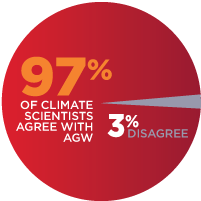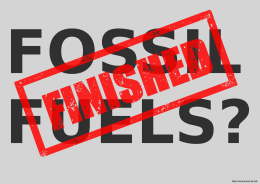Duplicity and distraction – false dichotomy
| If it’s presented as a case of black and white, it’s more likely to be red – a red flag. |
How to recognise this tactic
In this tactic, people assert that there are only two possible (and usually opposite) positions to choose from, when in fact there are more. They try to argue that if one position is shown to be false, then the other must be correct.
When people thought the earth was flat, they were wrong. When people thought the earth was spherical, they were wrong. But if you think that thinking the earth is spherical is just as wrong as thinking the earth is flat, then your view is wronger than both of them put together.
Isaac Asimov, Russian – American biochemist and author, 1989
Why do people use this tactic?
People use this tactic when their position has very little supporting evidence. To distract from this, they propose an ‘opposite’ position, find faults in that, and then claim that their position, by default, must be correct. It’s similar to the “distract and misdirect” techniques used by stage magicians in their sleight-of-hand tricks.
What’s wrong with this tactic
At best, the perpetrators of this tactic are ignorant and unaware of the full range of models and evidence in the field. At worst, they are deliberately misrepresenting the situation in order to distract and mislead their audience into accepting their own position.
What to do when confronted by this tactic
The alarm bells should ring when you are told there are only two possible arguments, or that it’s a case of black or white. While this can sometimes logically be the case, usually it’s a red flag. As soon as you detect it, think about the possibilities of other positions and ask the perpetrator about them.
Variations and related tactics
This tactic is also known as the fallacy of the excluded middle, the either-or fallacy, or the black and white fallacy. Often, the ‘position shown to be false’ is a straw man – that’s a position the perpetrators claim is held by their opponents, but in fact is a faulty one they themselves have manufactured.
Examples
- Climate deniers frequently set up this false dichotomy: CO2 is good/CO2 is bad. They point out that CO2 is not poisonous, it’s ‘plant food’, it’s in beer and soft-drinks. All of these things, they argue, are good, so the claims that CO2 is harmful must be wrong. Here’s the tactic being used by Christopher Monckton:
And here by Alan Jones, Ian Plimer, and a whole host of the usual suspects.
In fact, these properties of CO2 are completely disconnected from its role as a greenhouse gas which contributes to climate change. - Here’s an article from Shaping Tomorrow’s World describing how false dichotomies (nature versus human, environmentalist versus corporation, organic versus modern agriculture) have been used in debates over GM foods.
Isaac Asimov’s quotation from The Relativity of Wrong, Pinnacle Books, 1989
| This is one of ScienceOrNot’s Science red flags. See them all here. |









Nice one, Graham. People who present false dichotomies basically need to grow-up and embrace complexity. Life (and death) would be so much simpler if Galileo had not observed moons orbiting Jupiter, but he did and they are. The Earth is not flat, nor is it at the centre of the Universe. The moon is not made of cheese and the Grand Canyon took a very long time to form. Sediments in the Mississippi River Basin really are 10s of kilometers thick and the Earth is really 4.6 billion years old. Climate change is real, and we are causing it… All somewhat disconcerting but denying the latter gets us nowhere apart from closer to catastrophe.
Yes, Martin. And I think the continued use of the “carbon dioxide is good/bad” dichotomy by the climate deniers shows how dishonest they are. It’s so transparently false that only the most ignorant or duplicitous could give it any air.
I thought climate change was a natural thing, but we are just amplifying it…
Stijn, in the past, all climate change has had “natural” causes.The current episode is pretty-well totally due to human-induced emissions.
Hi Stijn. Assuming this comment to be more than ironic repetition of the “climate has always changed” meme (i.e. itself a false dichotomy), I would say this: The Earth’s climate certainly does not need humans to change it but, when humans release 300 million years-worth of fossilised carbon back into the atmosphere in 300 years, you should not be surprised if the climate changes faster than is “natural”. We are now well on the way to pushing the Earth to a different climate state from that in which most existing species evolved (and doing so faster than most can or will adapt). If you want to call that just ‘amplification’, so be it. However, I think the vast majority of relevant Earth and Life scientists consider it to be a bit more serious than that.
This tactic is used all over the place, not just out of wanton manipulation. At least as often it features in Mainstream Media Narratives because essentially they think we are too stupid to appreciate nuance, or they can’t be bothered to take the time to explain it.
So the highly complex situation in Ukraine (semi-random example) is often reduced to “pro west protesters = good, putin et al = bad. Opponents of western MSM narrative too easily flip this through 180 degrees. In fact both sides have some good, and probably more bad points to them. I think Stevie Wonder and Paul Macartney wrote about that kind of thing in a song.